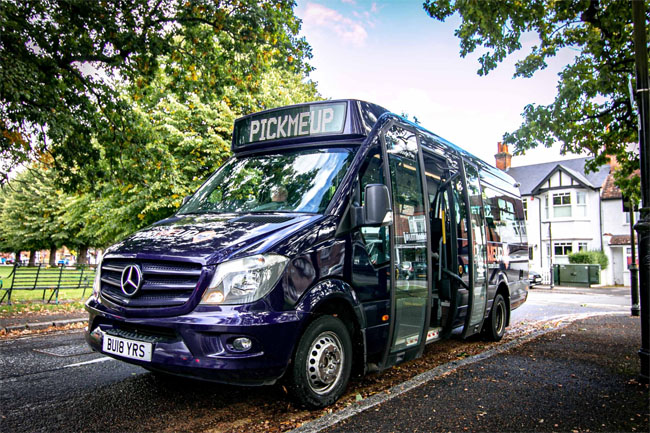Three in four large rural councils in England are rolling out demand-responsive transport (DRT) bus services but councils have warned that they are not financially sustainable or a substitute for government subsidy for traditional services.
The County Councils Network (CCN) said its survey found that while many councils are using DRT services – a type of bus service that users can book – to fill the gap left by dwindling mainstream bus services, 95% of services operate at a loss.

Carousel Buses’ PickMeUp ride-sharing service launched in High Wycombe last year
Fewer than 20% of councils said DRT services are financially sustainable to operate in the future.
The CCN said bus services are at a ‘historic low’ in county and rural areas, with more than one in four bus services 'vanishing' over the past decade and 344 million fewer journeys in 2022 as a result of reduced services.
It said its survey showed hundreds of thousands of journeys taking place on DRT services each year across county areas but argued that these are not a substitute for new investment in commercial bus routes.
The CCN called on the Government to redirect cash saved from curtailing HS2 towards county and rural councils, which have seen the biggest levels of decline in passengers but the least funding from Bus Service Improvement Plans.
Transport spokesperson Cllr Stephen-Giles Medhurst said: ‘County authorities have had to innovate and step in – putting in place demand responsive transport to fill the gap left by the decline in commercial buses. They have proved popular with residents who use them, particularly the elderly, who need transport for essential journeys, such as shopping and doctors’ appointments.
‘While this survey shows DRT services play an increasingly important role, they are there to complement existing bus services – not a substitute for them. With councils facing unprecedented financial pressures, sustainable investment from government in traditional bus services remains the priority in ensuring a comprehensive local transport network.’
The survey found:
- 75% of councils in county and rural areas offer DRT, with almost half (46%) running up to five different services across their areas and 20% running over five different services. Some 15% of authorities are running over 10 DRT services.
- The highest annual number of DRT journeys in one county was 300,000.
- No council operates DRT services at a profit. Some 95% of councils said their service operates at a loss, whilst just one council said they run services at a mixture of profit or loss.